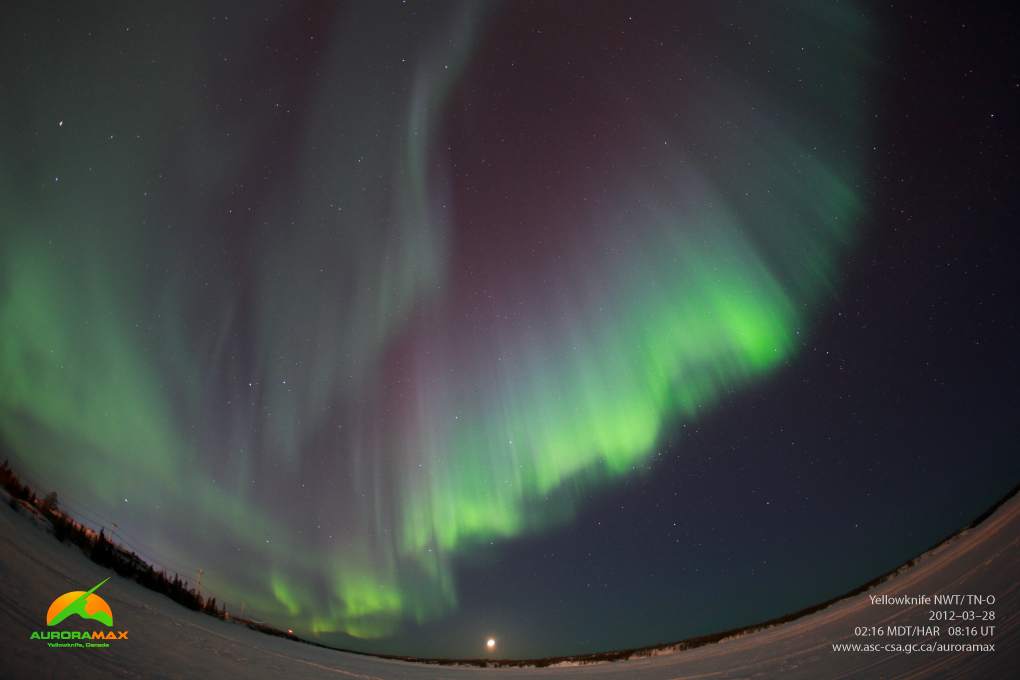Space Apps : Be a citizen scientist
From October 19 to 21, participants in Montreal, Ottawa, Toronto, Waterloo, Edmonton and Winnipeg will join developers, designers, students, engineers and entrepreneurs from around the world to create original applications during NASA's Space Apps Challenge 2018. This international hackathon occurs over 48 hours in cities around the world. Participants share ideas and use open data to address real-world problems, on Earth and in space.
Inspired by the success of its participation in last year's event, the Canadian Space Agency (CSA) will facilitate access to Canadian datasets and present our own challenges at events held in the six host cities across Canada.
Challenge 1: Asteroids explorer
Use data from the Near-Earth Object Surveillance Satellite (NEOSSat) to enhance Canada's contribution to the international effort to discover, catalogue and track near-Earth asteroids.
Your challenge
The goal of this challenge is to maximize NEOSSat's output to the space astronomy community by creating new tools to support image planning and processing. These tools could enhance Canada's contribution to asteroid science and play an important role in planetary defence. Interested in other targets? Turn NEOSSat's eye towards comets, moons of other planets, stars with exoplanet candidates, supernovas, galaxies, or black holes. The exact scientific targets you want to prioritize are up to you.
Challenge 2: Zero in on northern lights
Help further scientific study on one of nature's most interesting and beautiful phenomena: auroras, also known as the northern lights. Use Canadian data to identify the northern lights with greater precision and come up with a solution to improve aurora forecasts.
Your challenge
The goal of this challenge is to find a way to improve forecasting of auroras. The first step is to analyze THEMIS videos/images and identify the northern lights with greater precision, despite the videos/images being compromised at times by poor viewing conditions and interference. The next step is to more accurately correlate the auroras with their corresponding magnetic field data.

The northern lights above Yellowknife, Northwest Territories. (Credit: Canadian Space Agency, University of Calgary, Astronomy North)
Challenge 3: Communicate the changing climate with Canadian space data
Use data from Canada's SCISAT satellite and OSIRIS instrument to communicate information about the atmosphere and climate to the general public and those interested in climate change.
Your challenge
The goal of this challenge is to develop graphical representations of SCISAT data, OSIRIS data, or both. These representations can be used to communicate information about the atmosphere and climate to the general public and those interested in climate change.
Challenge 4: Be a bio-spy
Autonomous monitoring of astronauts is essential for future long-duration space flight to inform medical decisions, to help astronauts maintain their health and well-being, and to shed light on the effect of deep-space missions on human physiology.
Your challenge
A new shirt worn by astronauts, called the Bio-Monitor, will provide various measurements including cardiovascular and respiratory activity. Be the first to use the physiological data from the Bio-Monitor in order to produce an algorithm that can identify the monitored activities. Think of how you would use your own Bio-Monitor data to improve your life!

Canadian Space Agency astronaut David Saint-Jacques will test the Bio-Monitor “smart shirt” in space in 2018-19. (Credit: Canadian Space Agency)
Challenge 5: Surprising Toronto!
Toronto is a surprisingly fast-growing city with a very vast territory. To facilitate urban life, many services need to be provided such as public transportation and recreational facilities such as parks.
Your challenge
The goal of this challenge is to use the RADARSAT-1 images provided to illustrate the evolution of Toronto since 1995, identify urban growth and its impact on residents, and propose urban planning solutions.

Toronto at night.
Challenge 6: Save the coasts of the North
A collaborative challenge between Natural Resources Canada (NRCan) and the Canadian Space Agency
Coastal recession is one of today's biggest environmental issues. Use data to raise awareness of this issue or design solutions to ensure that northern coasts are not submerged.
Your challenge
The goal of this challenge is to help create tools and find solutions to the issues brought forth by climate change using the satellite imagery provided by the CSA and field work photos provided by NRCan.
With rising temperatures, permafrost in the North is melting. This causes significant coastal recession. Canada's Earth observation satellites have been monitoring our coasts for over 20 years and partner scientists, including many at Natural Resources Canada, have been hard at work studying coastal changes in the North, in places like Tuktoyaktuk.
To find solutions, analyze the field work photos provided by NRCan and compare archived data from RADARSAT-1 with current data from RADARSAT-2.
Prize
Winning teams will get a chance to have a virtual conversation with one of our Canadian astronauts. So get those creative juices flowing!
About Space Apps
Space Apps is an international hackathon that occurs over 48 hours in cities around the world. Coders, scientists, designers, storytellers, makers, builders, technologists, and others with a curious mind come together to address challenges we face on Earth and in space!
Space Apps 2017 in numbers:
187 events
Over 25,000 participants
Six continents
3 Canadian cities (Ottawa, Toronto, Waterloo)
For more information on the 2018 Canadian events, visit local websites and follow the action on Twitter!
